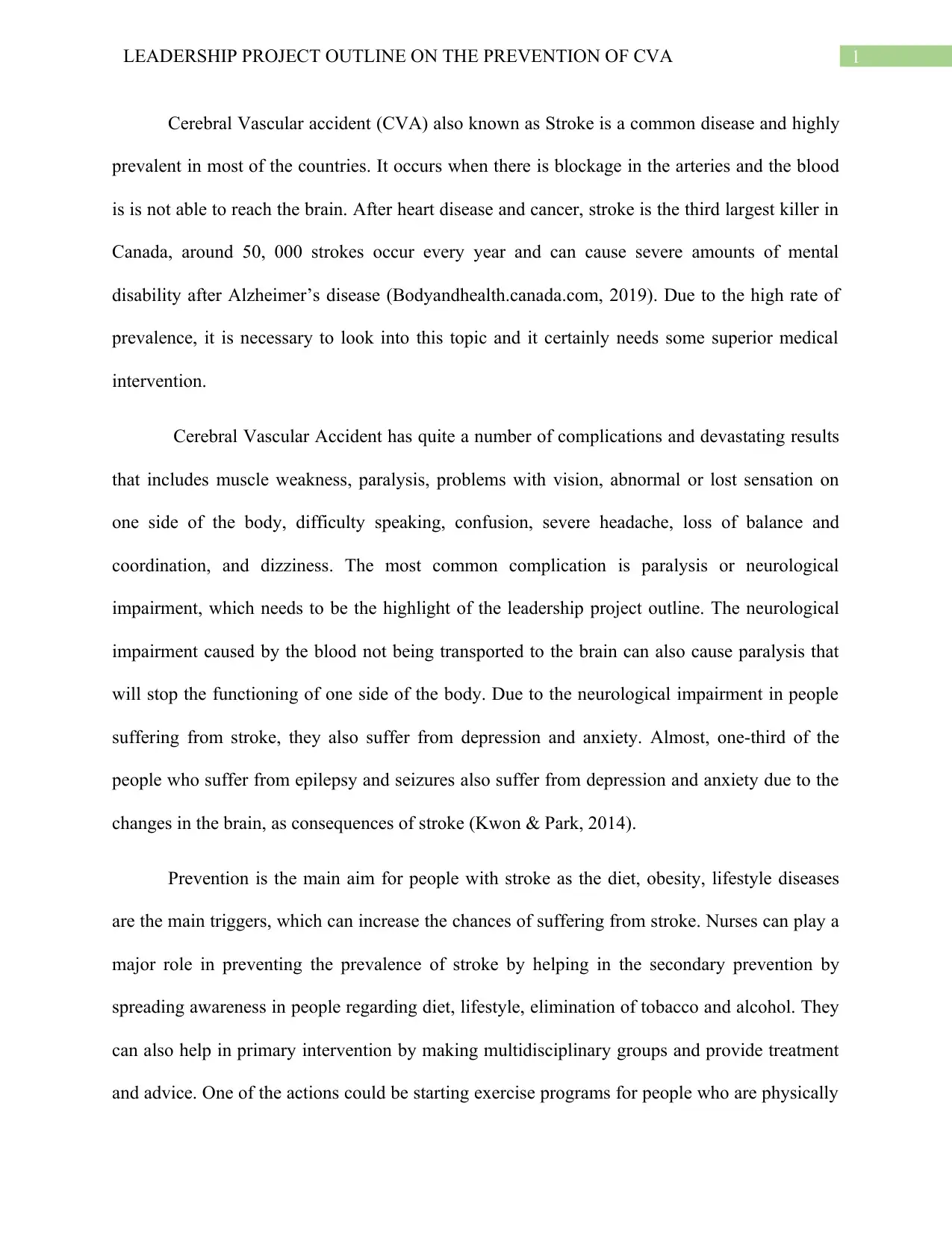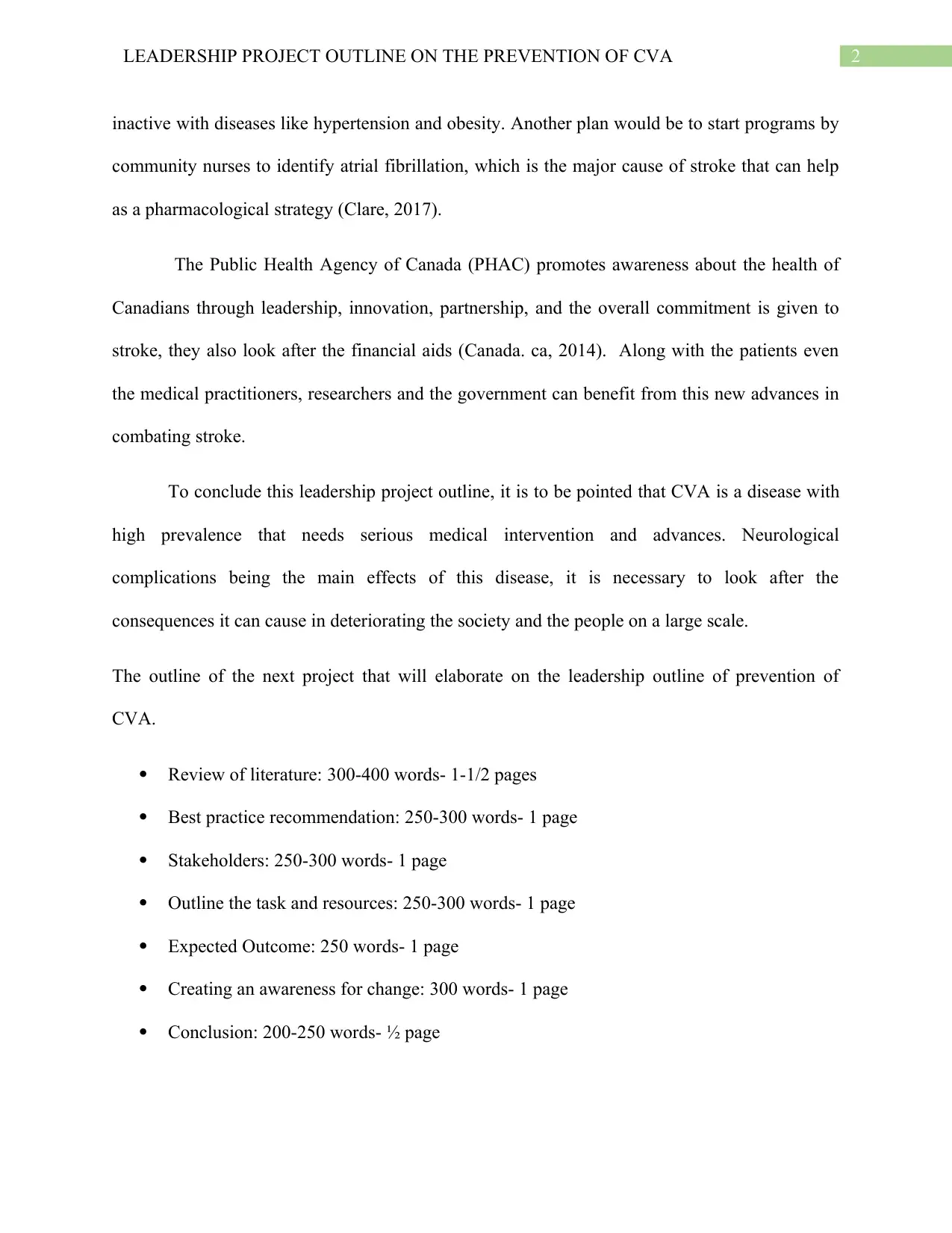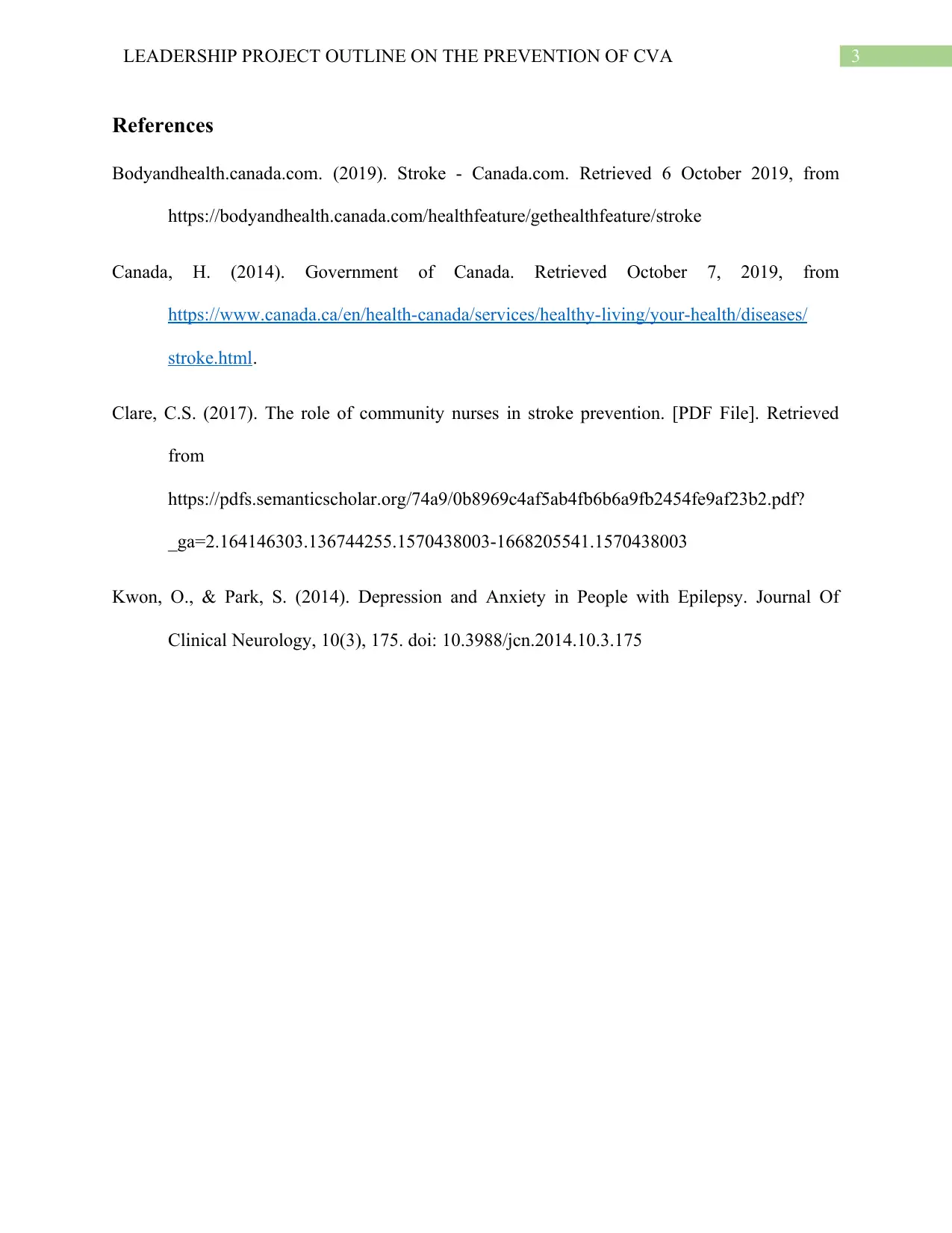University Nursing Leadership Project Outline: CVA Prevention
VerifiedAdded on 2022/09/28
|4
|771
|19
Project
AI Summary
This leadership project outline focuses on the prevention of Cerebral Vascular Accidents (CVA), also known as strokes, a significant health concern with high prevalence and devastating consequences. The outline emphasizes the crucial role of nurses in prevention, particularly through secondary and primary interventions like promoting healthy lifestyles and identifying risk factors. It highlights the impact of CVA on individuals, families, and communities, including physical disabilities, mental health issues, and financial burdens. The project aims to address challenges related to CVA, such as disability, by reviewing literature on best practices and recommending changes for improved patient outcomes in both hospital and community settings. Stakeholders include patients, medical practitioners, researchers, and the government. The outline details the tasks, resources, and expected outcomes of the project, including creating awareness for change and measuring the impact of interventions. The project aims to reduce the prevalence of CVA and its detrimental effects on society. The outline also references current research to support its recommendations.
1 out of 4











![[object Object]](/_next/static/media/star-bottom.7253800d.svg)